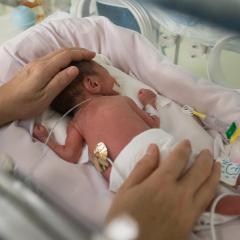Scientists from UQ’s Institute for Molecular Bioscience have peered deeper into our cell’s ‘little caves’ to better understand how our cells respond to their environment, and are affected in diseases such as cancer and muscular dystrophy.
“We have obtained the first high-resolution image of part of the protein scaffold that forms these cave-like structures on the surface of cells in our body,” IMB lead researcher Dr Brett Collins said.
It was in the 1950s that scientists first spotted these cave-like structures—also known as caveolae—but no one knew what they were for or how they are formed.
“In certain diseases, like breast cancer or muscular dystrophy, caveolae aren’t present and we want to understand why,” IMB lead researcher Professor Rob Parton said.
“We know mutations or defects in the proteins that form the scaffolding of these caves have been linked to specific diseases, but we still don’t fully understand how the scaffold is built or why these caves need to form in the first place.”
Dr Collins was excited to discover what part of the cave scaffold looks like at the atomic level.
“With this new knowledge we can start to visualise how the proteins might stitch together to form the larger rod-like structures of the cave scaffold,” Dr Collins said.
“What we’d love to do next is get a high-resolution image of the whole scaffold that lines the cave, so we can see how all the individual pieces fit together.”
By getting such a close look at the scaffolding of the caveolae, the researchers have a new understanding of why the little caves form on our cells.
“We believe that when the scaffold is taken down or dismantled, a signal is sent to the cell, and this signalling is a really important part of healthy cell function,” Professor Parton said.
“Having a complete blueprint of the internal structure of these caves will give us new insights into healthy cell signalling, allowing us to develop new treatments for diseases such as cancer and muscular dystrophy in the future” he said.
The study published in Developmental Cell involved researchers from IMB, UQ’s Centre for Microscopy and Microanalysis, and the University of New South Wales, and was funded by grants from the National Health and Medical Research Council and the Australian Research Council.
To make a tax-deductible donation to IMB’s cancer research, visit imb.uq.edu.au/donate
ENDS
Media contact: Gemma Ward, IMB Communications Manager, 07 3346 2134 or 0439 651 107, communications@imb.uq.edu.au



